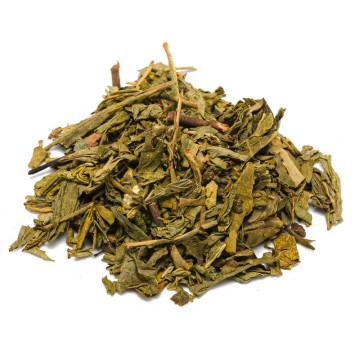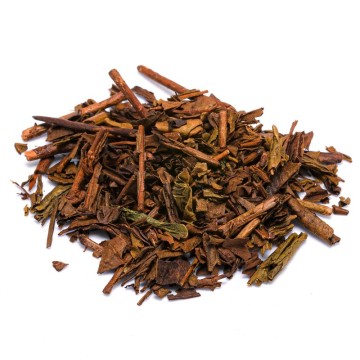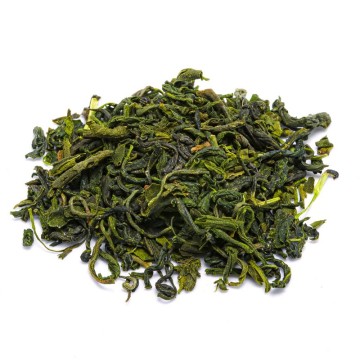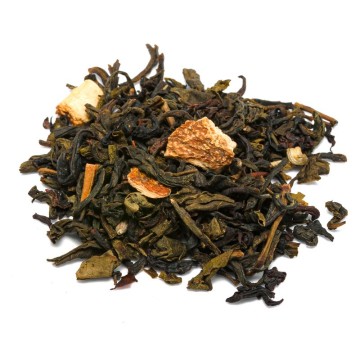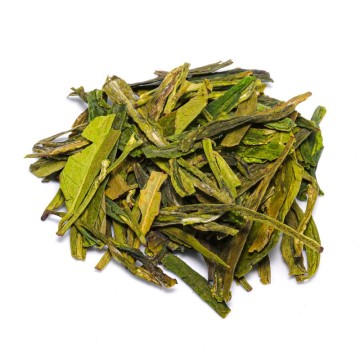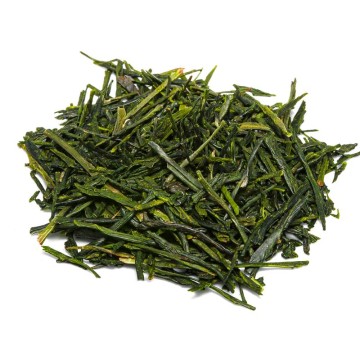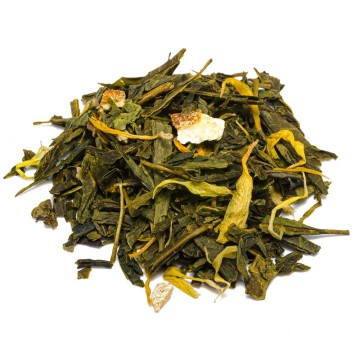Green tea with pomegranate flowers
Drinking green tea with pomegranate is a pleasant way to improve the well-being of the heart and give other benefits to our body. The pomegranate is combined with tea through the infusion of dried pomegranate flowers, and gives a touch of sweetness, also enhanced by the presence of rose petals.
Properties and benefits
Sencha green tea, which comes from the Chinese Camellia Sinensis plant, is in itself a drink known for its beneficial ingredients, such as the many antioxidants present. The pomegranate, an oriental fruit, combines the virtues of green tea with its ability to release other antioxidant substances, such as anthocyanins. These substances that help the body fight and prevent cell aging and, in particular, the pomegranate antioxidants strengthen the immune system. The benefits of pomegranate concern the positive effects of these flowers on blood pressure, and help the body to lower overall cholesterol levels. It works in synergy with green tea, whose catechins can counteract the intestinal absorption of fats. The properties of the flower derive from PPAR receptors, which help in the absorption and storage of fatty acids, and glucose balance. The polyphenolic antioxidants of green tea and pomegranate offer potential natural anti-inflammatory qualities, with effects that soothe irritations due to the digestive process.
Combining pomegranate with tea can also give a beneficial boost to the metabolism, also promoting the loss of weight in a weight loss diet. A factor that can help improve the fat-burning potential of tea, due to compounds known as catechins, which can also help lower blood sugar levels.
Equally, the pomegranate flower could provide benefits by slowing down the digestion of carbohydrate and sugar molecules. In terms of virtues useful for the cardiovascular system, green tea promotes the correct function of blood vessels, maintaining the lining of the arteries, in order to reduce the risk of arterial plaque formation. It offers health benefits to the cardiovascular system by supporting the body in reducing levels of low-density lipoprotein, LDL or "bad" cholesterol.
This drink also prevents excessive increase in blood pressure, thanks to the pomegranate. The component of pomegranate flowers helps the digestive system, prevents constipation and works together with green tea for the well-being of the intestine - which works properly. With its diuretic effect, common to pomegranate and green tea, this drink detoxifies the body and facilitates the elimination of harmful substances from the body. In addition, the pomegranate flower helps in oral hygiene, giving a pleasant sensation on the palate. Rose petals help to enhance the beneficial properties of tea, thanks to the antioxidant properties of anthocyanins and flavonoids, and to the natural anti-inflammatory properties - also known to soothe sore throats.
Origins and History of cultivation
Sencha tea is one of several types of green tea, differentiated by the growth of the plant, the production and processing of the leaves. Sencha is a more popular green tea in Japan, first used only in the 17th century. The tea leaves were brought to Japan from China around the 9th century by some Buddhist monks who introduced this drink. Initially it was created with an elaborate ritual, slowly stone grinding the leaves, to obtain Matcha. In the seventeenth century the informal preparation of Sencha was introduced, with dried and processed leaves. It became the favorite drink of the Japanese because it didn't require any kind of preparation in advance, and could be enjoyed right away.
The process begins with the Camellia sinensis plant, from which the leaves that grow under the sunlight are harvested. It is customary to make a first and second harvest, and the first is the best quality sencha. The leaves of the upper shoots are harvested immediately, as they are the youngest and of the highest quality. After the growing and harvesting process, the leaves undergo the steaming process immediately, to prevent oxidation and have a green tea (without any oxidation). If the leaves are partially oxidized, they become an ingredient for oolong tea, while those that are completely oxidized become black tea. The leaves then pass to the drying and rolling process, where the tea takes shape and the flavor of the green variant is defined.
The leaves dry and then become needle-like. Although some particular ways of preparing the sheetsand they vary in the different types of Sencha tea, in each case it does not undergo much processing and retains all its nutrients. Highly valued, still today, 80% of all tea from Japan is Sencha. The second ingredient is given by the leaves of the pomegranate, the native tree of the Himalayas, and of the regions of Iraq, Iran and Pakistan. It seems to have already been present in human nutrition in 3,500 BC. according to the excavations of the early Bronze Age. Today the pomegranate is now grown in many subtropical areas of the world, mainly in the dry Mediterranean regions, with hot, dry summers. The flowers are usually considered a by-product of pomegranate cultivation, as they fall profusely, and are not yet as widely used in herbal medicine as the fresh fruit. In ancient times it was also appreciated by the Egyptians as a fruit, considered a symbol of the afterlife. Pomegranate flowers were crushed to obtain a red dye, and the peel was used to dye leather.
Over the centuries it has always been a symbolic and highly appreciated fruit, even reaching America after the Spanish missionaries planted the first pomegranate trees in Mexico in the 16th century. Rose petals come from the beautiful flowers of plants perhaps best known for their beauty. The rose is believed to have originated in Asia, and is now widely grown in many parts of the world. Roses have always been known as ornamental flowers, and rose petals are also used in various religious rites or ceremonies. It evokes feelings of affection, and a stemmed rose is often given as a token of love and friendship. In the kitchen, thanks to the rich content of vitamin C, the fruit of the rose becomes edible, while the dried petals have been used in distilled form, for centuries, in cosmetics, medicines and therapeutic treatments.
Plant and flowers
Sencha green tea comes from the Camellia sinensis plant (Theaceae family). It is a plant native to South-East Asia, today cultivated in tropical and subtropical climates, with different altitudes, up to about 2,000 meters in height. It could also reach considerable heights, but the tea plant is pruned to a height of about one and a half or two meters, to favor new growth of the shoots and manual harvesting of the leaves. Growth occurs at different times, depending on the regions and altitudes. Camellia sinensis has abundant foliage, with a yellow-white flower similar to a camellia, and also bears a berry. The seeds of the plant are pressed to obtain the tea oil. The young leaves are light green, and darken in maturity.
The young shoots offer the most nutrients after processing. The pomegranate flower comes from the small shrub Punica Granatum, belonging to the Punicaceae family. It is a family of two species: Punica Granatum L. and P. Protopunica. The pomegranate tree grows up to 5 meters, with an early flowering, giving odorless but very colorful flowers. They are about 5-9 cm long and have a unique cylindrical shape, and not all flowers develop into fruit. The Rose is a thorny plant that belongs to the Rosaceae family, of which there are over 100 species. They give petals of different colors, and are grown precisely for shades from white to yellow and pink, dark crimson, even brown. Most of the petals have a delicious scent, differing in variety and growing climatic conditions.
The climbing shrubs show thorns of various shapes and sizes, alternate leaves usually oval and toothed. Wild roses usually have five petals, while cultivated roses have multiple sets of petals, which vary in size. The sometimes edible fruit is berry-like, red to orange in color. An important factor for the growth of roses is the amount of water available in each season; moreover, it is easily attacked by fungal diseases when the foliage is kept in humidity.
Nutritional values of Green tea with pomegranate flowers
This infusion contains vitamins (Vitamins A, B, C) and antioxidants including flavonoids, catechins, polyphenols. It makes minerals such as potassium, phosphorus, calcium, iron available. In addition to tannins and a low dose of theine (caffeine). Pomegranate flowers are formed from phenolic compounds such as gallic acid and chlorogenic acid, caffeic acid, ferulic acid, quercetin, etc. The antioxidant properties are due to the presence of anthocyanins. Rose flower petals contain antioxidants such as terpenes, glycosides, flavonoids and anthocyanins and organic acids. They are a source of vitamin C, vitamin A, vitamin E, iron.
How to prepare green tea with pomegranate flowers
The infusion is obtained by placing about 3-5 grams of the mixture of green tea with pomegranate flowers and petals in a cup (250 ml) of water at 80 °C. of pink. Let it steep for 2 to 3 minutes before drinking this green tea. Those who wish can add honey or sugar.
Green tea with pomegranate flowers: side effects and contraindications
Remember that excessive tea intake can cause some potential adverse effects, such as gastrointestinal discomfort, stomach pain, nausea, excessive diuresis, diarrhea, stomach ulcers. More rarely, effects related to theine (caffeine) on the nervous system may occur - insomnia, anxiety, agitation - or an increase in blood pressure.
Among the potential side effects of green tea, it can increase the levels of liver enzymes, therefore particular attention should be paid to the doses taken by those suffering from liver diseases. Moderation in the intake of green tea is recommended for those suffering from heart problems, due to theine, and are being treated with drugs that act on the nervous system. Excessive consumption of pomegranate flower infusion can cause side effects such as dizziness and weakness, cramps, nausea and diarrhea. Caution is advised when taking to pregnant and lactating women.

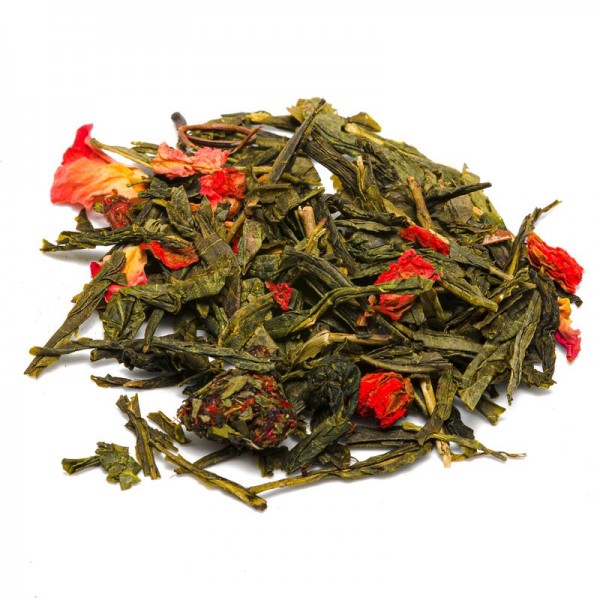







 No reward points for this product.
No reward points for this product.
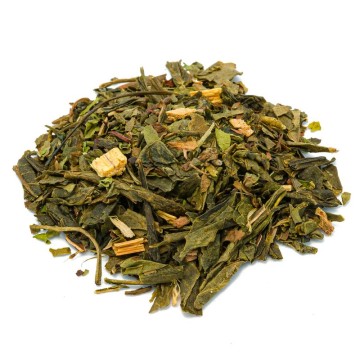
![Green tea with orange and grapefruit [Natura d'Oriente]](https://www.naturadoriente.com/3376-home_default/green-tea-with-orange-and-grapefruit.jpg)
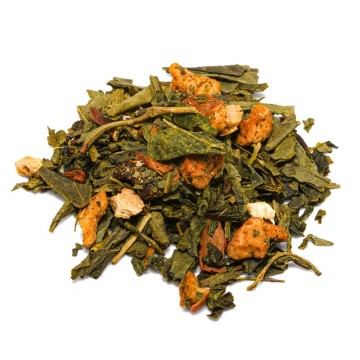
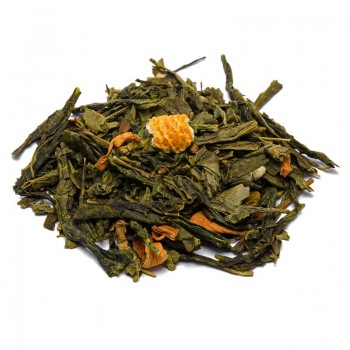
![Ginseng and ginger green tea [Natura d'Oriente]](https://www.naturadoriente.com/3367-home_default/Green-tea-ginseng-ginger.jpg)
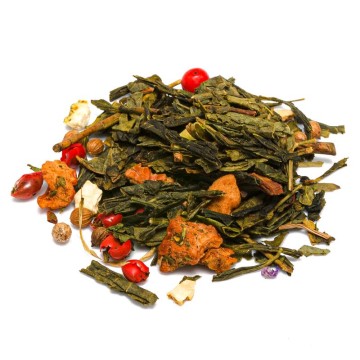
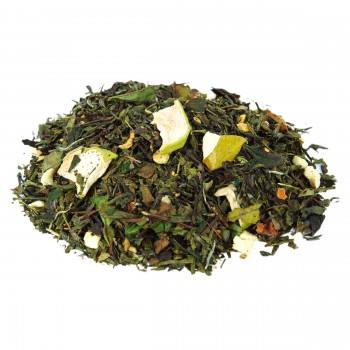
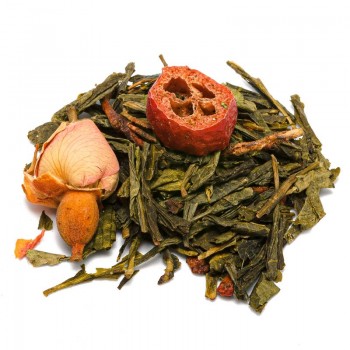
![Green tea Jasmine and jasmine [Natura d'Oriente]](https://www.naturadoriente.com/3373-home_default/green-tea-jasmine-and-jasmine-.jpg)
